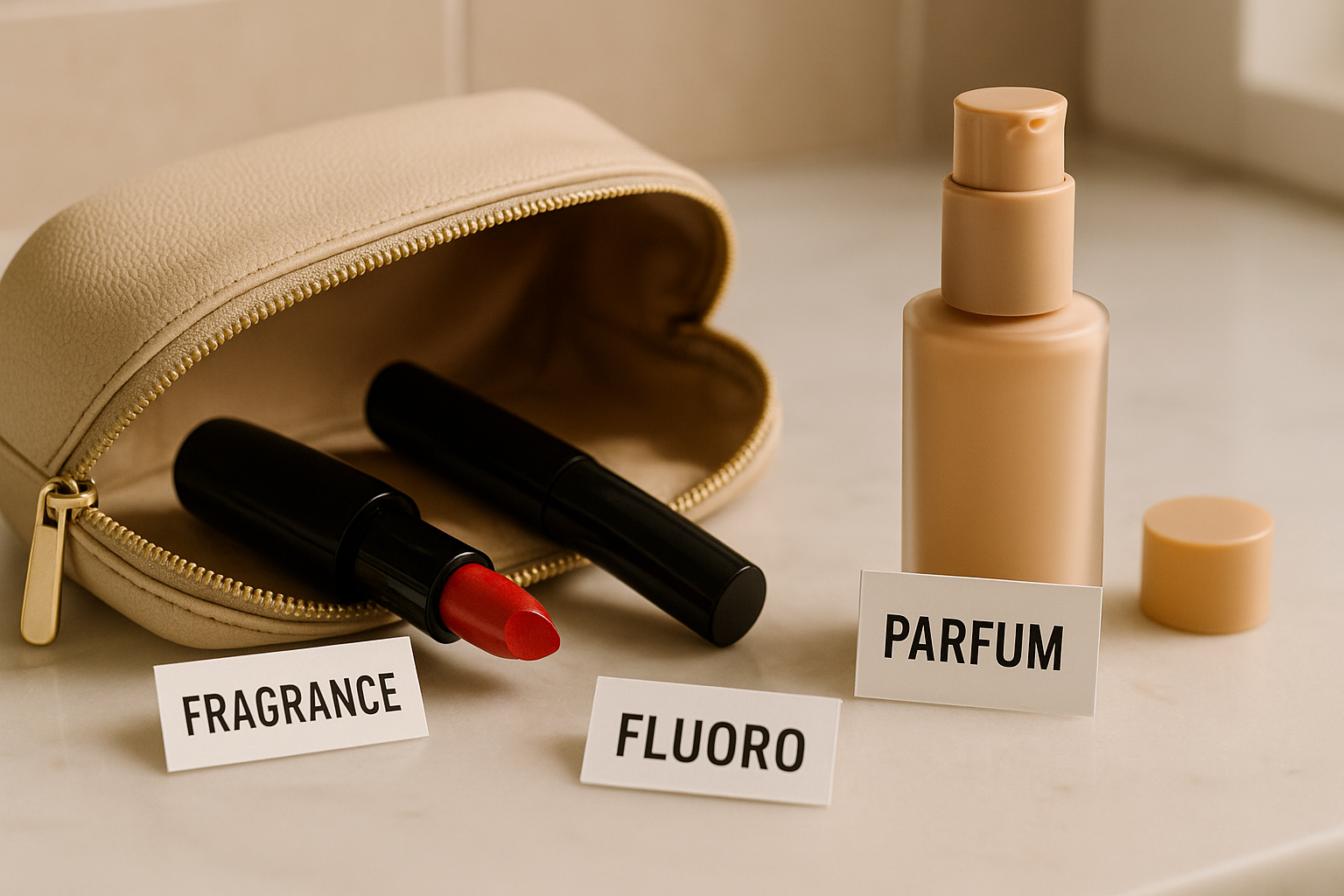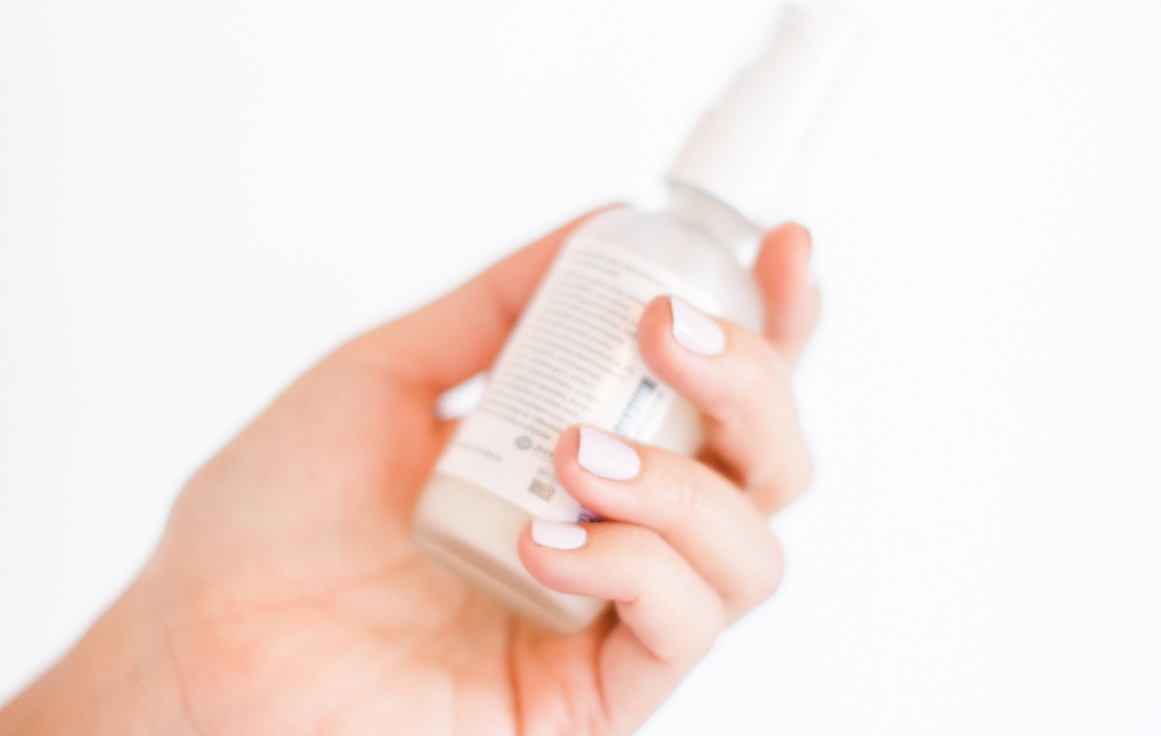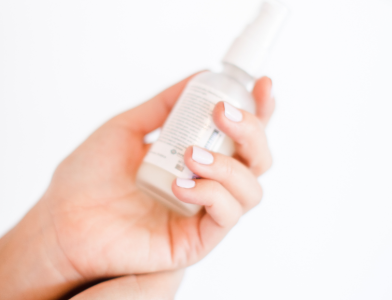If you use drugstore mascara, lipstick, or foundation, you might be exposing your body to more than just color and coverage. As a toxicologist, I’ve spent decades researching how everyday chemicals affect our health, especially those found in common cosmetics. Today, let’s unpack the hidden risks in your beauty bag and how you can swap wisely for a safer, low-tox makeup routine.
Why Makeup Matters for Toxin Exposure
Most people don’t realize that makeup isn’t just “on” your skin…it can be absorbed into your bloodstream. Some chemicals found in mainstream cosmetics can interfere with hormone balance, contribute to disease risk, and accumulate over time, making it harder for your body to recover.
- Cosmetics often contain endocrine disruptors and “forever chemicals” (PFAS).
- Skin is not a perfect shield; certain ingredients get through.
- Lower-cost products can carry higher toxic loads, affecting vulnerable groups the most.
Three Major Hidden Risks in Makeup
1. Fragrance/Parfum: One word that can mask the presence of dozens, or even hundreds, of unlisted chemicals. These can include phthalates, which are linked to hormone disruption, fertility problems, and certain cancers.
2. PFAS (Forever Chemicals): Found especially in products advertised as “longwear,” “waterproof,” or “smudge-proof,” these don’t just wash away. They can stay in your body for years and are linked to hormone issues, immune suppression, and increased cancer risk.
3. Heavy Metals: Ingredients like lead, cadmium, and arsenic can be present as contaminants, mostly in lipsticks, eyeliners, and bold-colored products. These metals can build up in your body and affect long-term health, especially in children and teens.
- Look for “fragrance” or “parfum” on labels—this is often a red flag.
- Avoid products with “fluoro” anywhere in the ingredients, a sign of PFAS.
- Exercise extra caution with dark, bright, or imported makeup shades.
Science-Backed Tips for Safer Swaps
- Switch to fragrance-free or essential-oil-scented products to reduce daily phthalate exposure.
- Avoid waterproof, long-lasting, or smudge-proof cosmetics to minimize PFAS risks.
- Prioritize swapping your most-used items first: Lip products (because they’re ingested), foundation (covers the biggest area), then occasional items.
- Choose trusted brands with clear labeling and third-party certifications (think EWG Verified, Made Safe, USDA Organic).
- Try multitasking products like tinted mineral sunscreen or cream blushes you can use on lips and cheeks for a double win on simplicity and safety.
- Always patch test new purchases and even natural products can cause irritation due to higher plant content.
Budget-Friendly Options and Drugstore Wins
If cost is a barrier, you don’t have to feel left out. E.L.F. (Eyes Lips Face) is a widely available brand focusing on vegan and plant-based ingredients, but be on the lookout for fragrances and waterproof claims. Swap your drugstore items slowly, starting with everyday essentials to make the biggest impact.
- Replace as you run out – not all at once.
- Skip bright colors or waterproof options from any brand if safety is your priority.
Quick Reference: What to Look For
- Short, plant-based ingredient lists you recognize.
- Certifications like USDA Organic, EWG Verified, or Made Safe.
- Trusted brands: RMS Beauty, Toups & Co, Araza Beauty, Juice Beauty, Saie, and W3ll People
Apps and Extra Tools
Ingredient-scanning apps like Think Dirty (EWG) can help spot red flags, but rely most on reading the label yourself. With a little practice, you’ll start to recognize and avoid problem ingredients.
Your Next Steps
Your skin is your largest organ, and every swap you make lessens your lifelong exposure. Even switching one product right now gives your body less to handle. Start today for future health benefits, and remember: simple, strategic choices add up over time.
Dr. Yvonne’s Favorite Makeup
Links provided on this page are affiliate links, which means if you click on it and make a purchase I may earn commission. The commission comes at no cost to you and allows me to continue my research. Note- I only recommend products that I personally use and/or trust. I will always disclose whether a link is an affiliate link, and never recommend products solely for the purpose of commission.
References
- Rádis-Baptista G. Do Synthetic Fragrances in Personal Care and Household Products Impact Indoor Air Quality and Pose Health Risks? J Xenobiot. 2023 Mar 1;13(1):121-131. doi: 10.3390/jox13010010. PMID: 36976159; PMCID: PMC10051690.
- Parlett LE, Calafat AM, Swan SH. Women’s exposure to phthalates in relation to use of personal care products. J Expo Sci Environ Epidemiol. 2013 Mar;23(2):197-206. doi: 10.1038/jes.2012.105. Epub 2012 Nov 21. PMID: 23168567; PMCID: PMC4097177.
- Yang Y, Wang J, Tang S, Qiu J, Luo Y, Yang C, Lai X, Wang Q, Cao H. Per- and Polyfluoroalkyl Substances (PFAS) in Consumer Products: An Overview of the Occurrence, Migration, and Exposure Assessment. Molecules. 2025 Feb 21;30(5):994. doi: 10.3390/molecules30050994. PMID: 40076219; PMCID: PMC11901761.
- Fenton SE, Ducatman A, Boobis A, DeWitt JC, Lau C, Ng C, Smith JS, Roberts SM. Per- and Polyfluoroalkyl Substance Toxicity and Human Health Review: Current State of Knowledge and Strategies for Informing Future Research. Environ Toxicol Chem. 2021 Mar;40(3):606-630. doi: 10.1002/etc.4890. Epub 2020 Dec 7. PMID: 33017053; PMCID: PMC7906952.
- Lockington C, Favetta LA. How Per- and Poly-Fluoroalkyl Substances Affect Gamete Viability and Fertilization Capability: Insights from the Literature. J Xenobiot. 2024 May 17;14(2):651-678. doi: 10.3390/jox14020038. PMID: 38804291; PMCID: PMC11130945.
- Peritore AF, Gugliandolo E, Cuzzocrea S, Crupi R, Britti D. Current Review of Increasing Animal Health Threat of Per- and Polyfluoroalkyl Substances (PFAS): Harms, Limitations, and Alternatives to Manage Their Toxicity. Int J Mol Sci. 2023 Jul 20;24(14):11707. doi: 10.3390/ijms241411707. PMID: 37511474; PMCID: PMC10380748.
- Arshad H, Mehmood MZ, Shah MH, Abbasi AM. Evaluation of heavy metals in cosmetic products and their health risk assessment. Saudi Pharm J. 2020 Jul;28(7):779-790. doi: 10.1016/j.jsps.2020.05.006. Epub 2020 May 29. PMID: 32647479; PMCID: PMC7335825.
- Alnuqaydan AM. The dark side of beauty: an in-depth analysis of the health hazards and toxicological impact of synthetic cosmetics and personal care products. Front Public Health. 2024 Aug 26;12:1439027. doi: 10.3389/fpubh.2024.1439027. PMID: 39253281; PMCID: PMC11381309.
- Saadatzadeh A, Afzalan S, Zadehdabagh R, Tishezan L, Najafi N, Seyedtabib M, Noori SMA. Determination of heavy metals (lead, cadmium, arsenic, and mercury) in authorized and unauthorized cosmetics. Cutan Ocul Toxicol. 2019 Sep;38(3):207-211. doi: 10.1080/15569527.2019.1590389. Epub 2019 May 9. PMID: 31072152.
- Whitehead et al, 2021. Fluorinated Compounds in North American Cosmetics. Environ. Sci. Technol. Lett. 2021, 8, 7, 538–544. https://doi.org/10.1021/acs.estlett.1c00240



